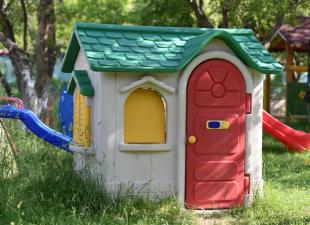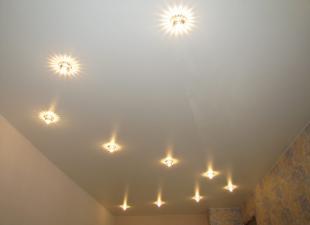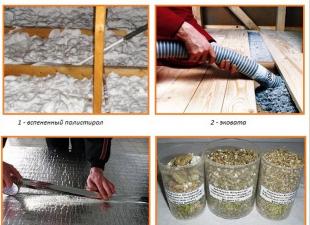90% of wiring problems occur precisely at the points of wire connections, which means that a high-quality connection cannot be neglected, which is the basis for the uninterrupted operation of wiring for a long time. More recently, during the Soviet era, during the construction of high-rise buildings, the power supply system was based on the widespread use of aluminum wiring, the connections of which were twisted and tightly rewound with insulating tape in a junction box. Of course, such simple twists have served faithfully for more than a dozen years, but in terms of reliability they are incomparable with modern methods of connecting electrical wires made of copper, the exceptional reliability of which allows you to connect any modern powerful devices and equipment.
Correct connection of wires is a guarantee of your safety
The electrical network of an apartment or house is largely determined by the quality, absolute reliability and exceptional safety of connecting electrical wires, without which it is impossible to imagine any electrical installation. At the connection site, the electrical contact must have:
- exceptional reliability of the connecting contact, the resistance of which does not differ from the resistance of the rest of the electrical wire;
- mechanical tensile strength. If suddenly the electrical wire at the connection site is subjected to sudden stretching, then the strength of the electrical contact should not be less than the strength of the entire cable.
Types of connection of electrical wires
Twisted connection of electric wires
Due to its ease of implementation, twisting is considered the most common method of connecting electrical wires. The twisting technology is elementary: take 2 wires, remove the 5 cm insulating layer. The resulting bare cores are reliably twisted and insulated with traditional insulating tape. In the connection areas, you can also use the "twist caps": they are screwed tightly, thereby tightening the electrical contact and reliably isolating the exposed areas.

A significant disadvantage of this method the influence of the human factor is considered: each electrician performs the same connection in his own way. In addition, even the most conscientiously executed and seemingly reliable twisting of electrical wires over time can become of poor quality under the influence of adverse environmental factors - mechanical stress, high levels of humidity and electrical stress. Therefore, it should be remembered that mechanical stranding will never give you a 100% guarantee of absolute reliability and safety.

Welding and soldering wires
The soldering of wires is more reliable than ordinary twisting, but it requires a little more time, special skills and knowledge in the field of electrical installation from the contractor.
No matter how high-quality the twisting is, but on this segment there is insignificant resistance, which means that at the moment the electric current flows, the connected contacts heat up significantly. Sooner or later, the insulating layer will melt, a short circuit and fire will occur. Soldering will provide you with a reliable, protected contact with low resistance and a high level of mechanical strength. Traditionally, soldering copper wires is done using rosin or tin-lead solder and, of course, a 100 W soldering iron. Soldering work is preceded by a preliminary coating of electrical wires with a thin layer of solder. Then the wires are twisted and soldered. The soldered joint is cooled exclusively in a natural way, otherwise cracks may occur in the future.

Among the disadvantages of soldering wires allocate the laboriousness of the process and the possibility of damage to the wire at the time of mechanical stress. This method is not as popular today as it was in the 90s.
Welding twisted wire ends is considered to be another very common connection method. It can be successfully implemented only with a 400-600 W power transformer and carbon electrodes. Under the influence of the arc and the heated electrode, the ends of the twisted electric wires are melted, which guarantees an extremely reliable and safe electrical contact.

After completing the adhesive and welding processes, it is necessary to insulate the wiring with a heat shrink tube resembling a cambric. The tube heated to a certain temperature tightly covers the connection area, thereby providing reliable and high-quality insulation. If you do not have such a tube at hand, you can use ordinary electrical tape.

Terminal block applications
The use of terminal blocks is considered the most popular method of safe and reliable adhesion of electrical wires at the present stage. The block itself is an insulated plate equipped with metal contacts for attaching electrical wires to them. With the help of such a device, you can easily connect copper wires with aluminum ones, thereby providing reliable and absolutely safe contact. The modern market for electrical products offers a huge variety of different types of terminal blocks:
1. terminal blocks. They are plates with a certain number of cells. The electrical wires are connected by means of a strong clamp when inserting the inserted bare cores into the terminal boxes. This method of adhesion is characterized by high reliability, quality and efficiency;

2.
spring terminals.
The technology for connecting electrical wires to this device involves stripping them and installing them in special holes, where they will be fixed with a special spring. The use of this method makes it possible to connect wires made of aluminum and copper, and also excludes the possibility of corrosion, since there is no direct contact of electrical wires; 
3. branch clamps.
With the help of such a device, the performer will be able to branch off the electrical wires. Terminal blocks of this type are equipped with two grooved plates for electrical wires. The clamp is made using four screws, with a third located between the two plates, which acts as a separator between the aluminum and copper wires at the time of their connection.

You can use absolutely any method of connecting electrical wiring, the main thing is to do the work correctly and in good faith. Only in this case you are guaranteed complete safety during the operation of the electrical wiring.
You can learn in detail how to correctly connect the wires from the video on youtube.
 parlini.ru Repair of an apartment, a summer residence and a house.
parlini.ru Repair of an apartment, a summer residence and a house.


